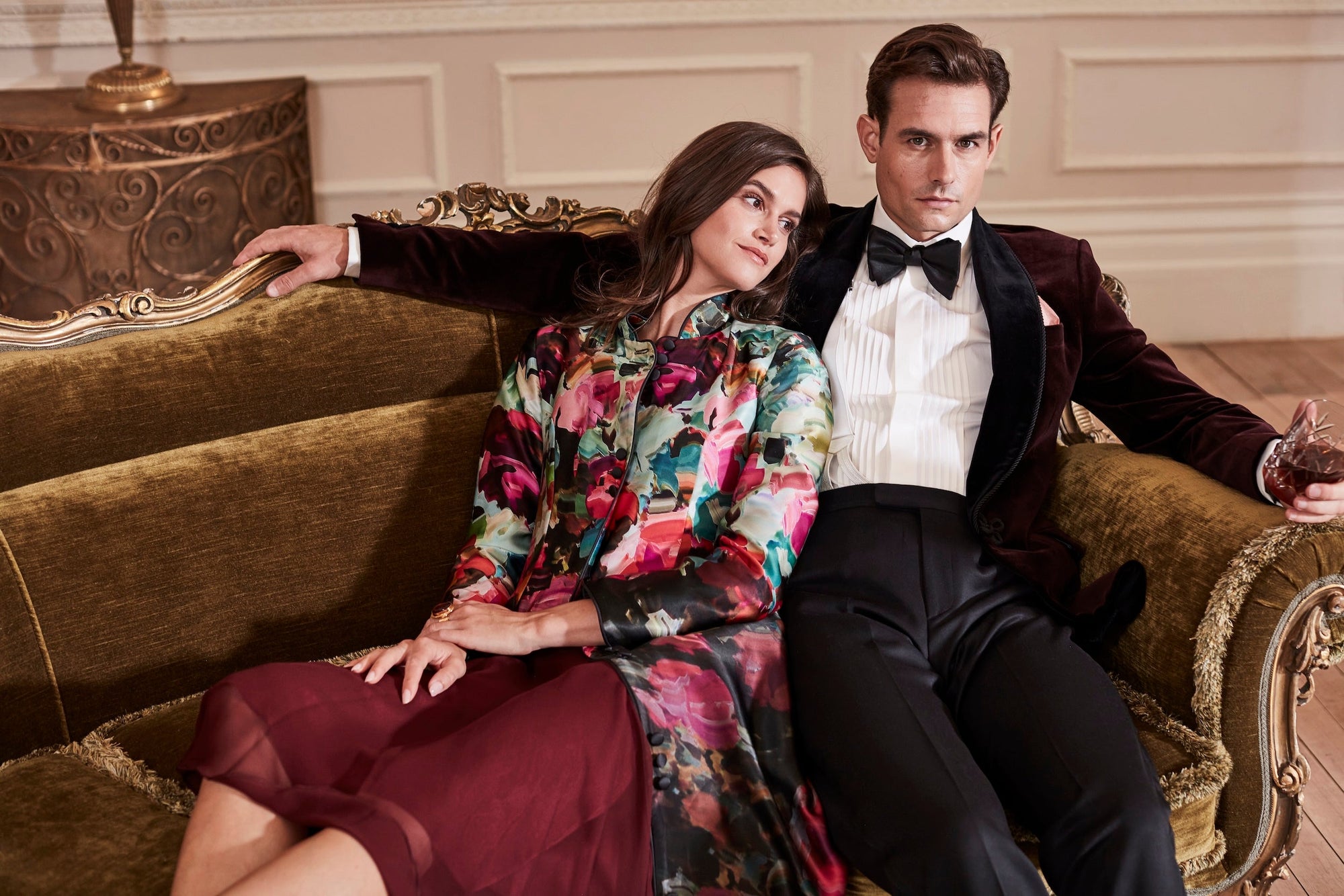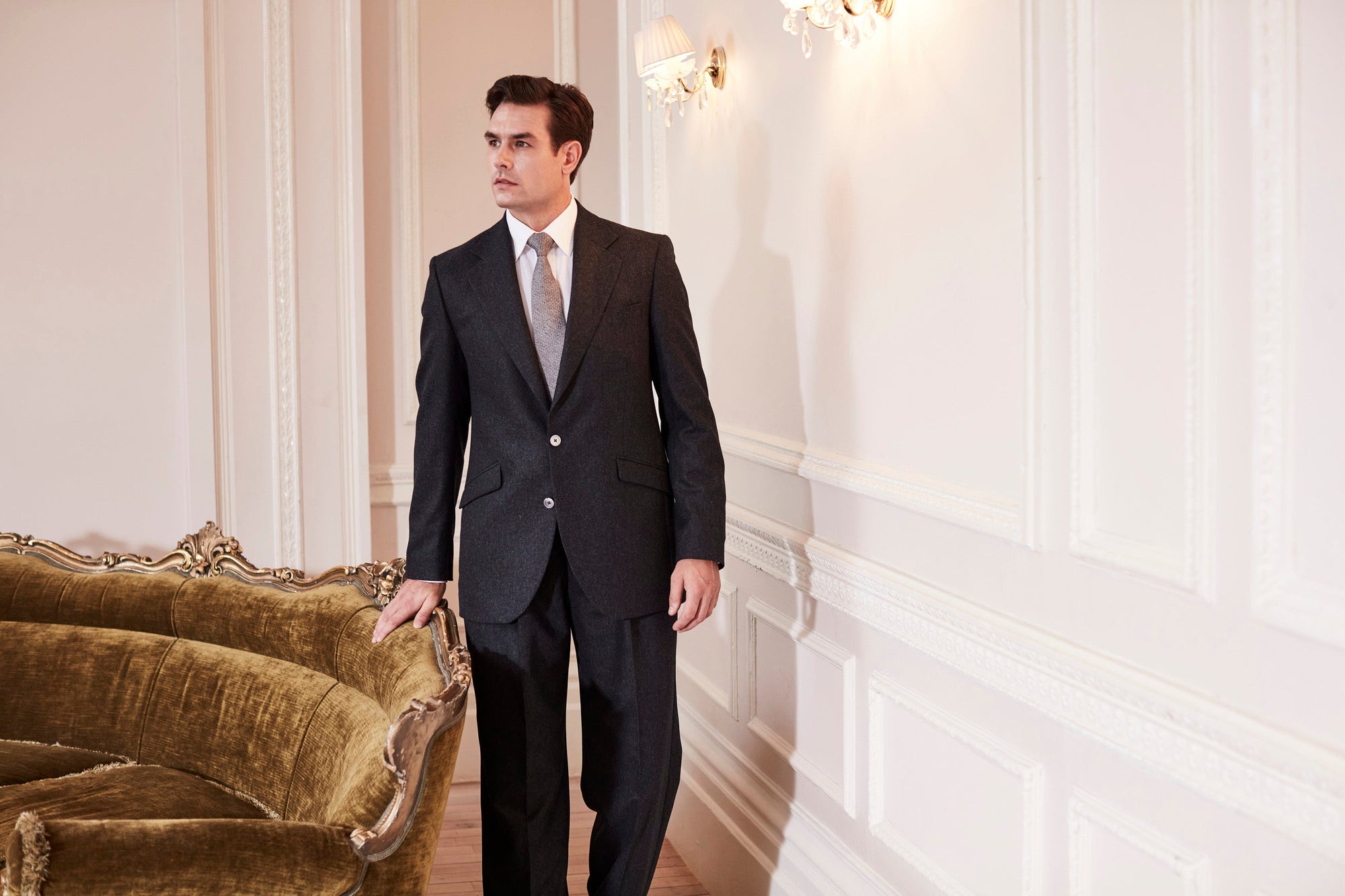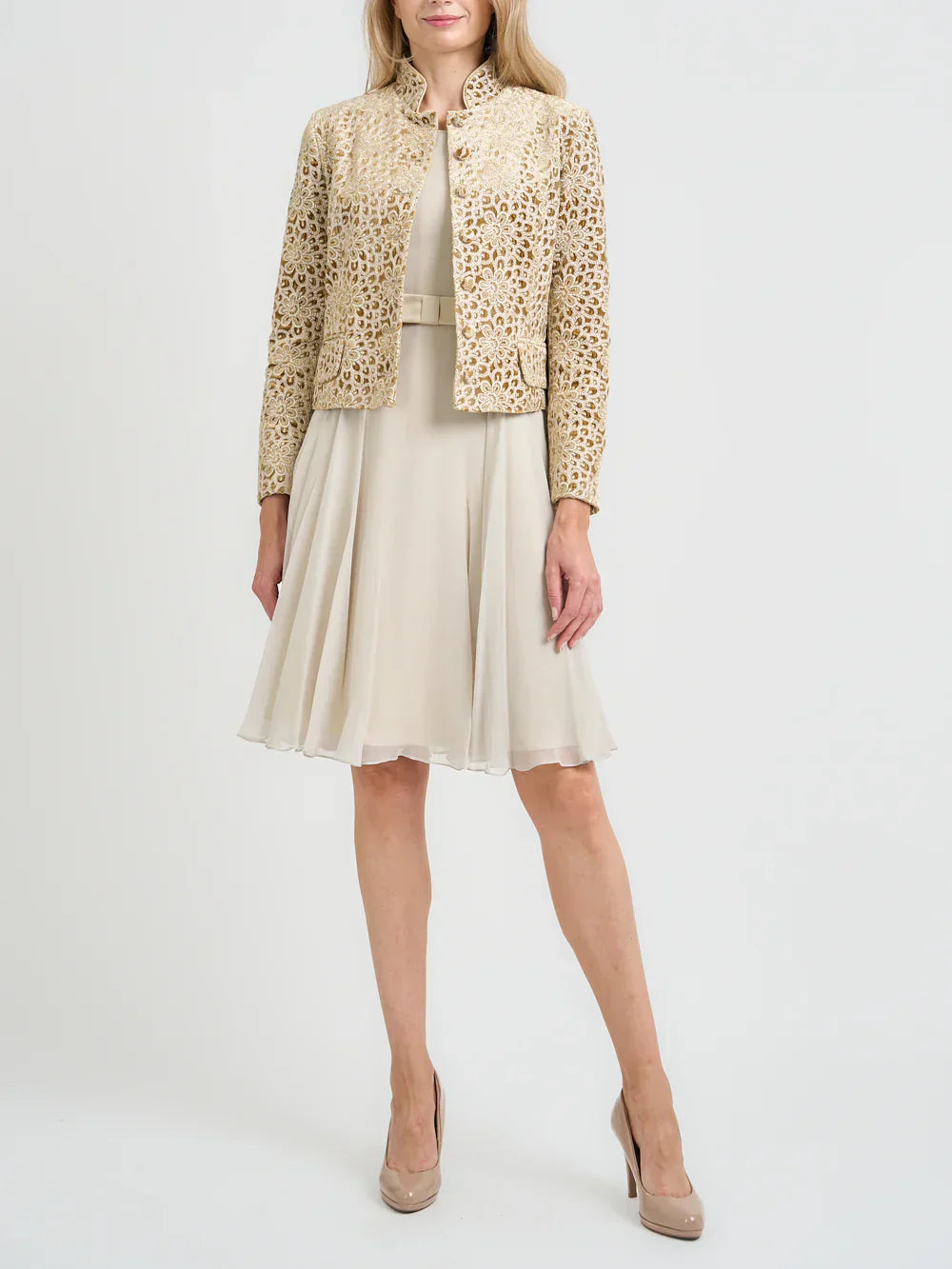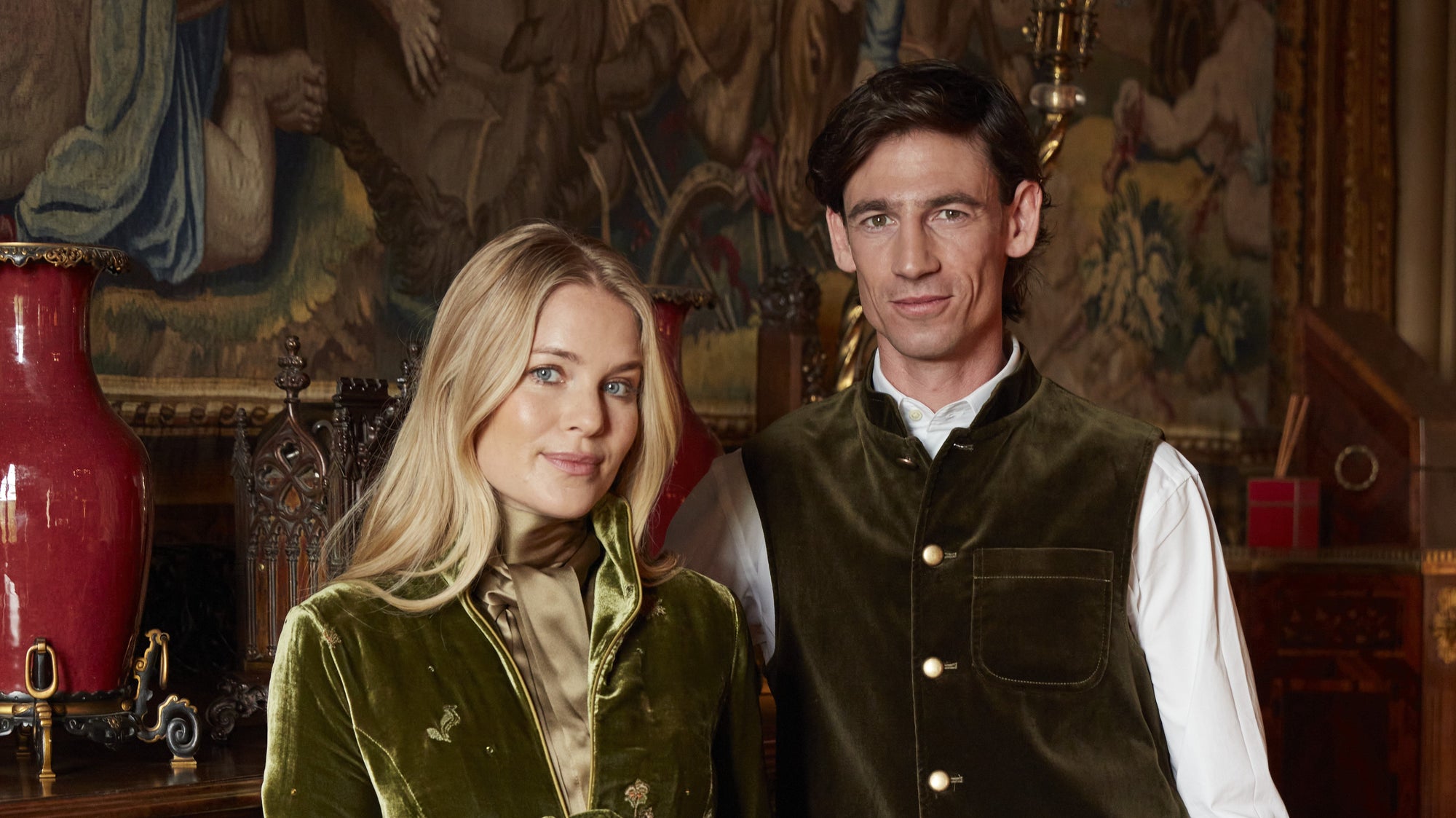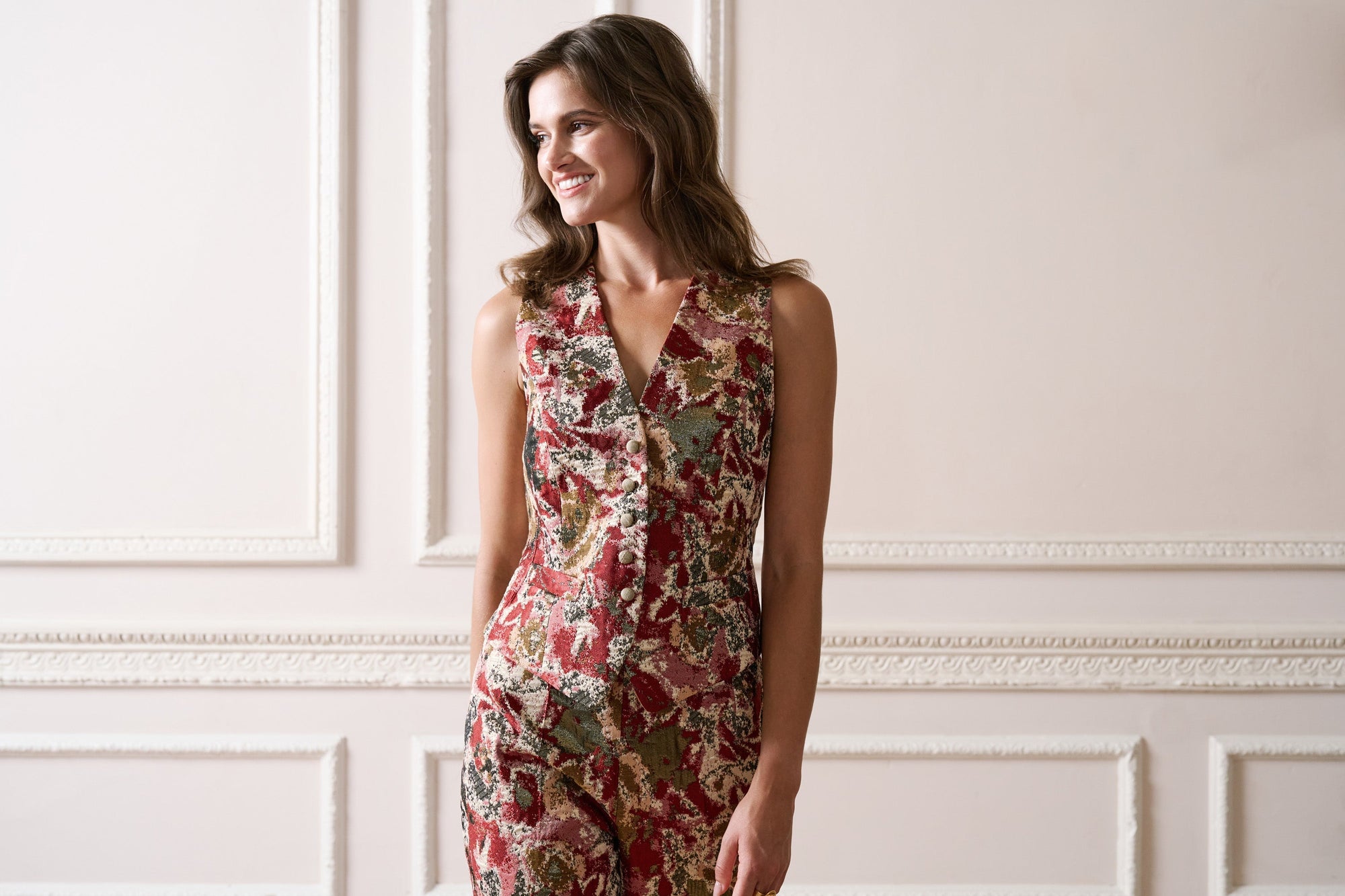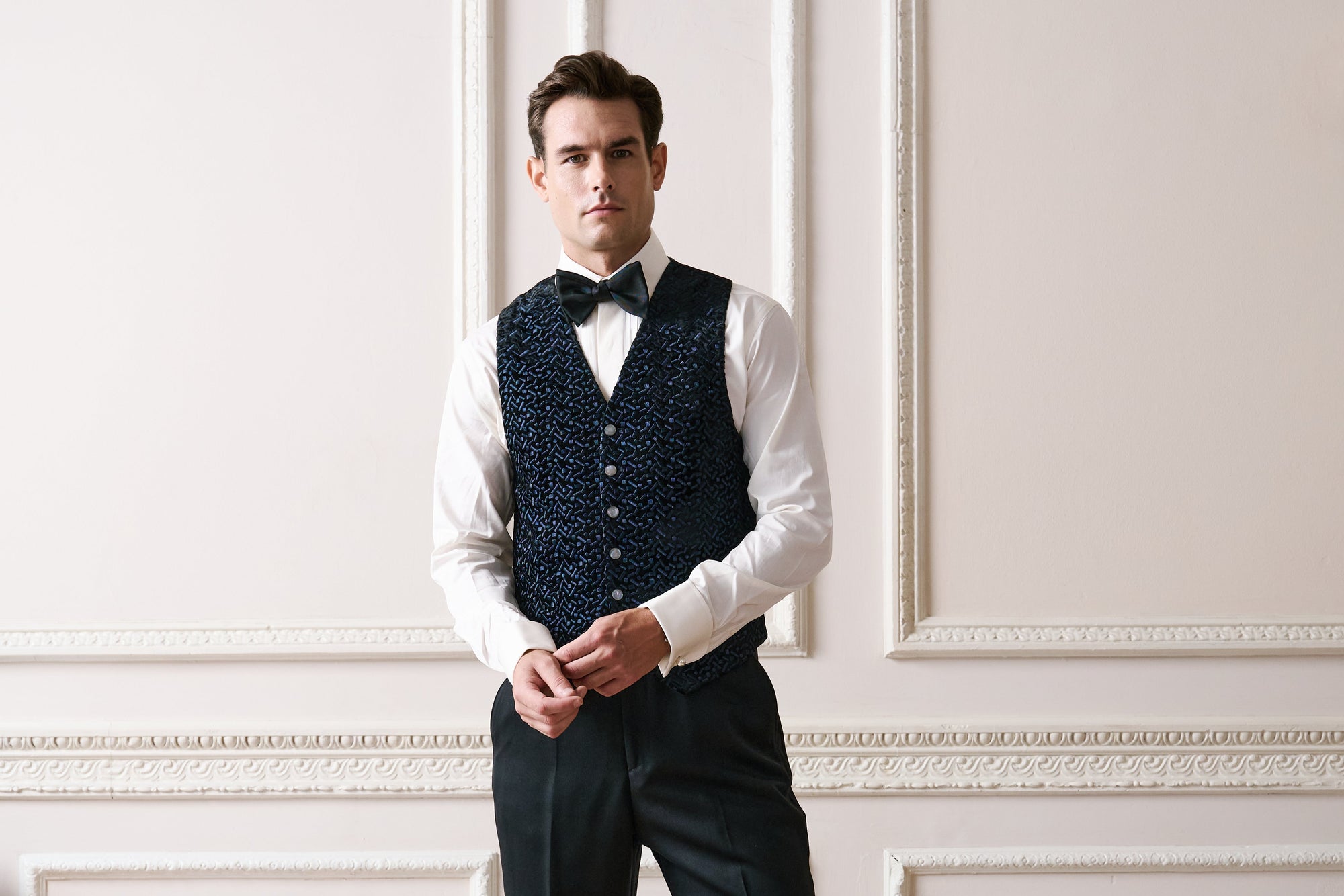When we were looking for a backdrop to shoot our new Autumn/Winter 22 campaign against, something with history, noblesse, style, and sheer beauty, a a stone’s throw from central London, only one place sprung to mind - Chiswick House and Gardens. Created by two Georgian trendsetters, the architect and designer William Kent and his friend and patron Richard Boyle, the third Earl of Burlington, the pair began work in 1725 until about 1738. It was a notable game-changer in British architectural history, mainly because the pair was greatly Influenced by their travels on the Grand Tour.
 Rejecting the showy, Baroque style fashionable in England at the time, Kent and the Earl of Burlington landed upon a simpler, symmetrical design based on the classical architecture of Italy. Where the gardens were concerned, they ripped up the formality of the early 18th-century garden preferring a much more natural-looking landscape, which subsequently became known as the English Landscape Movement, which inspired gardens from Blenheim Palace to New York’s Central Park.
Rejecting the showy, Baroque style fashionable in England at the time, Kent and the Earl of Burlington landed upon a simpler, symmetrical design based on the classical architecture of Italy. Where the gardens were concerned, they ripped up the formality of the early 18th-century garden preferring a much more natural-looking landscape, which subsequently became known as the English Landscape Movement, which inspired gardens from Blenheim Palace to New York’s Central Park.

After the earl’s death in 1753, the estate passed to the Dukes of Devonshire by marriage. The 5th Duke demolished the old Jacobean manor house and make a mansion of the villa, while the gardens had significant remodellings. When the Devonshires eventually moved to their main residence circa 1860, the house was rented out to a number of notables including Edward Prince of Wales who hosted his mother Queen Victoria, members of the royal family, and guests from across the world at his garden parties. When the Tuke brothers, Thomas and Charles, took over the lease, they turned Chiswick House into a pioneering mental health institution from 1892 to 1928. The Tukes wanted their invariably wealthy patients to feel as though they were recuperating in a country house, hence why they kept much of the 6th Duke of Devonshire’s furniture.
Interior Splendour
As we discovered, the interior of Chiswick House is still magnificent, but when it was a functioning household of Burlington and Kent, and then later the Devonshires, it must have been one of the most eye-opening in all of London. For the Earl of Burlington, the house provided him ample space for his vast collection of “paintings, specially-designed furniture and souvenirs from his European travels. The lavish interiors of the first floor, the ‘piano nobile’, were hung with richly coloured velvet. These wall coverings have been re-created in the Blue Velvet Room, Lord Burlington’s private study, which is hung with hand-woven blue silk velvet.”
 So far, so decadent. According to the historians of the house: “In the 18th century, the velvet hangings would have been almost obscured by a huge number of paintings. Lord Burlington was one of 18th-century Britain’s greatest art collectors and his support of designers, artists and musicians earned him the title ‘Apollo of the Arts’, bestowed on him by the historian and writer Horace Walpole. By the early 1890s, Chiswick had largely been cleared of its collections, but from the mid-1950s onwards some pieces have returned. Today the Upper Tribune provides the best example of Burlington’s original picture hang.”
So far, so decadent. According to the historians of the house: “In the 18th century, the velvet hangings would have been almost obscured by a huge number of paintings. Lord Burlington was one of 18th-century Britain’s greatest art collectors and his support of designers, artists and musicians earned him the title ‘Apollo of the Arts’, bestowed on him by the historian and writer Horace Walpole. By the early 1890s, Chiswick had largely been cleared of its collections, but from the mid-1950s onwards some pieces have returned. Today the Upper Tribune provides the best example of Burlington’s original picture hang.”
 William Kent had a large hand in the interior design, too. Kent designed furniture specially for Chiswick House, most of which featured a scallop shell motif that became his trademark. He was also responsible for the painted ceilings at Chiswick - his splendid ceiling in the Red Velvet Room shows Mercury, representing commerce, directing Abundance (who holds a cornucopia or horn of plenty) to the three visual arts – Architecture, Sculpture and Painting. When the house passed to the 5th Duke and Duchess of Devonshire, it was redecorated in their vision, leaning on elements of Anglo-French, neo-classical style, creating “an impression of lightness and elegance.”
William Kent had a large hand in the interior design, too. Kent designed furniture specially for Chiswick House, most of which featured a scallop shell motif that became his trademark. He was also responsible for the painted ceilings at Chiswick - his splendid ceiling in the Red Velvet Room shows Mercury, representing commerce, directing Abundance (who holds a cornucopia or horn of plenty) to the three visual arts – Architecture, Sculpture and Painting. When the house passed to the 5th Duke and Duchess of Devonshire, it was redecorated in their vision, leaning on elements of Anglo-French, neo-classical style, creating “an impression of lightness and elegance.”
We think it’s a splendid scene for our collection this year and feel very honoured to have been able to shoot there. Well worth a visit next time you’re in West London!

